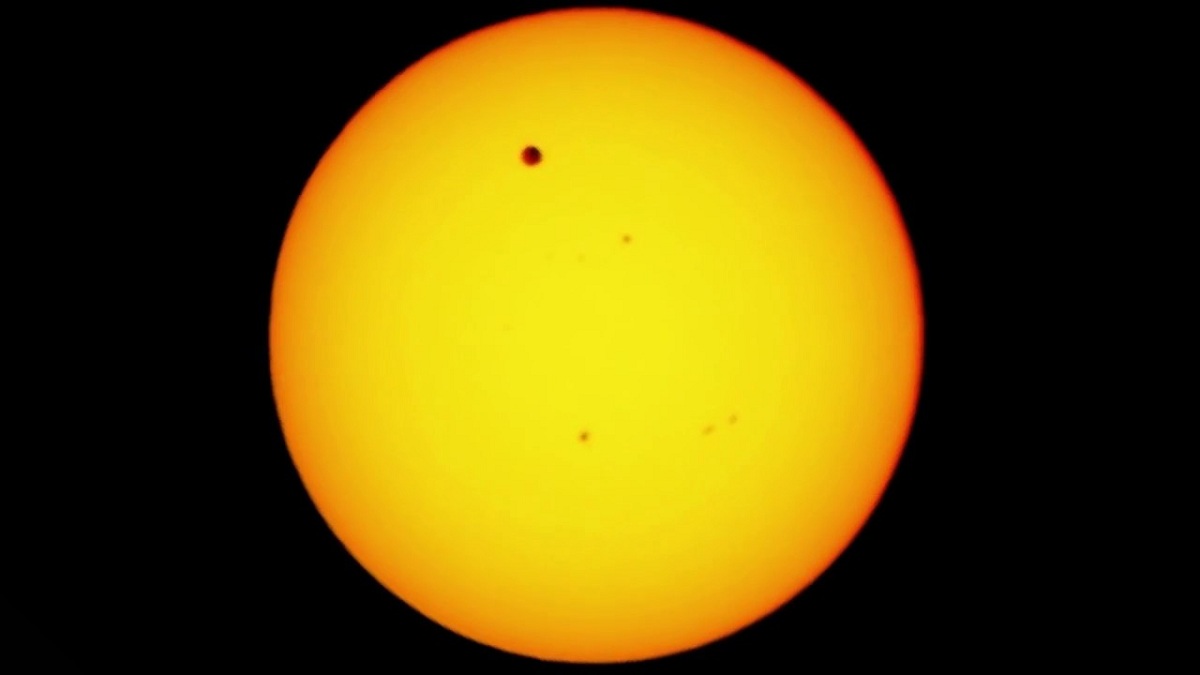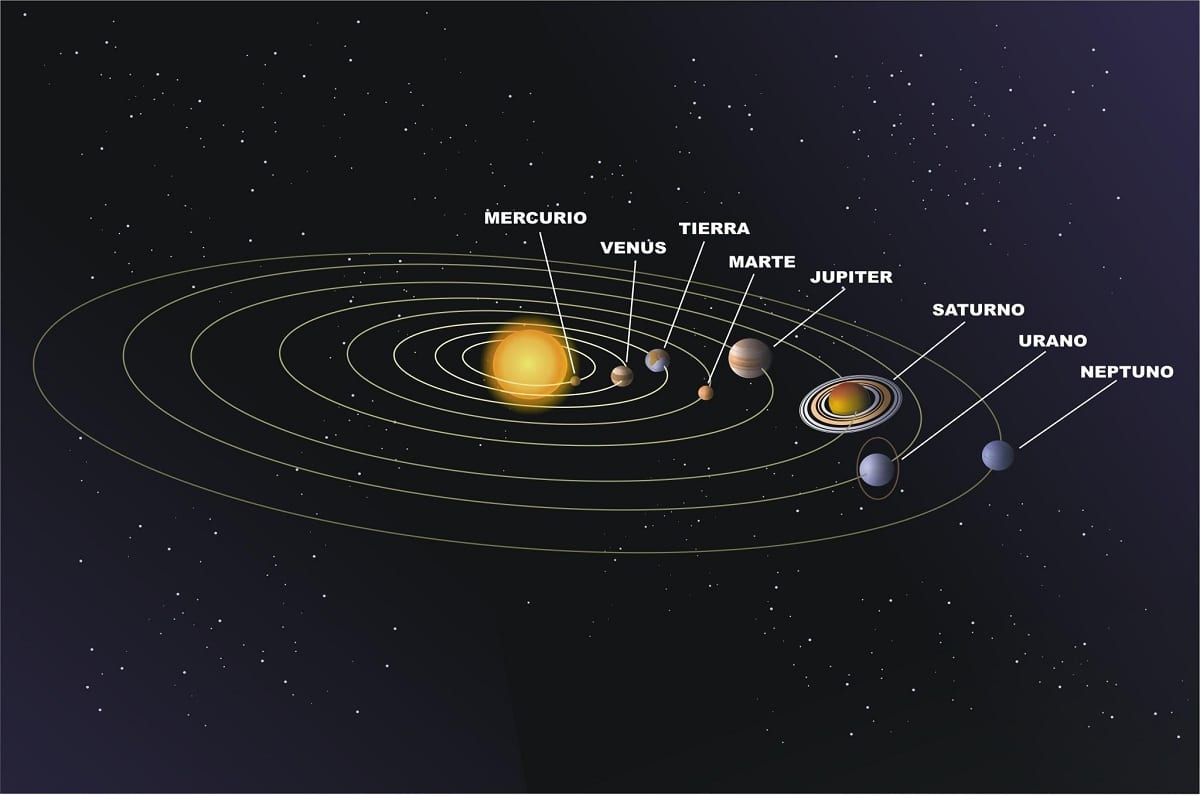
There are astronomical events that take place every hundreds of years. One of them is the transit of Venus. It is an astronomical phenomenon that has only taken place 7 times since the invention of the telescope. It happened in the years 1631, 1639, 1761, 1769, 1874, 1882 and 2004. The last time it was seen was on June 6, 2012. It is about the transit of Venus cutting the solar disk.
In this article we are going to tell you what the transit of Venus is about and what its characteristics and curiosities are.
What is the transit of Venus
We call the transit of Venus the apparent passage of this planet in front of the disk of the sun. From the ground you can only observe the transits of those inner planets to its orbit. For example, the transit of Mercury at the rate 13 times per century and that of Venus at the rate of 13 per millennium. If the orbits of other planets such as Mercury, Venus and the Earth are exactly the same plane, the transits of the first two would be much more frequent. However, this is not so. The fact of being in different levels of the orbit, make the encounter less frequent. Sometimes you can see the transit give a planet thanks to the crossing of the disks.
From the terrestrial point of view, Mercury and Venus can enter a lower conjunction and not enter the solar disk, but pass through the good south north of the star. We know that Mercury's orbit has an inclination of 7 ° with respect to that of the Earth, and that of Venus of 3,4 °. With these conditions of the orbit established, we must know what are the situations that cause the transit. The lower conjunction of the inner planet occurs when it is in one of the orbital nodes. In this way, those points of the orbit are those that cross the plane of the orbit of our planet. Only in this case, the sun and planet Earth are practically in a straight line and it is possible to observe the passage of the planet in front of the solar disk.
The last transit of mercury could be observed in 2016, while the transit of Venus has had to pass more than a century to be seen. The next couple of transit of this planet will take place more than a century after distant companies such as December 10, 2117 and December 8, 2125.
Transit of Venus through the solar disk

The transit of Venus in front of the solar disk is more spectacular than that of Mercury. This is because the apparent diameter is much larger due to its proximity to our planet. We know that the disk of Venus is 61 ″ in diameter (1/30 of the solar diameter) it is five times larger than the disk of Mercury, which only reaches 12 ″. This is the view from our planet.
These transits take place in the first days of June and December when the sun is located less than 1 ° 45 ′ from the node and the planet reaches its lowest conjunction. Astronomers have described this type of phenomenon as a rare phenomenon and only occurs within a day or two of the dates on which our planet passes through the nodes. We also know that they happen at absolutely regular intervals and always over the course of 243 years.
We are going to see what are the main events that occur during the transit of Venus to highlight the importance of this phenomenon:
- First contact: In this first contact, the disk should apparently touch the disk of the sun. This is the beginning of the transit and later it can be observed how it is introduced in it. This we know is not entirely so, but it is a visual appearance.
- Second contact: It is the part of this phenomenon in which the disk of Venus is tangent inside the solar disk. We can see that the black point travels the sun with a practically uniform linear motion. More or less you can estimate a speed of about 4 minutes of arc per hour. The transit between the two contacts can take several hours.
- Third contact: this is when the disk of Venus touches the edge of the solar disk.
- Four Contact: it is the end of the transit of Venus. In this part of transit, the discs meet externally tangents.
It could be said that the first two contacts are defined as the input phase and the last are considered as the output base.
How to watch it
This last transit took place more than 8 years ago, but certain conditions had to be met in order to see it properly. It lasted 6 hours and 12 minutes and occurred between 22:09 p.m. and 04:49 a.m. UT (two more hours for Spanish peninsular time), so it was barely visible from our latitudes. In Spain in the part of the peninsula they had to move as far north as possible and to high places that have a flat and clear eastern horizon. It must be taken into account that the solar disk leaves with the transit in its last moments. These last moments are the third and fourth contact. This makes the elevation of the sun above the ground a few degrees.
It could be seen in the best location that It was the coast of Girona with a direct view of the sea which is in the area where the sun rises. The best location to observe it on the peninsula is somewhere high on the coast of Girona with a direct view of the sea where the Sun will rise. The size of Venus seen from Earth during a lower conjunction is about 60 ″, or a 3 % the angular size of the Sun, enough to see it without the need for an optical device.
I hope that with this information you can learn more about the transit of Venus and its characteristics.

